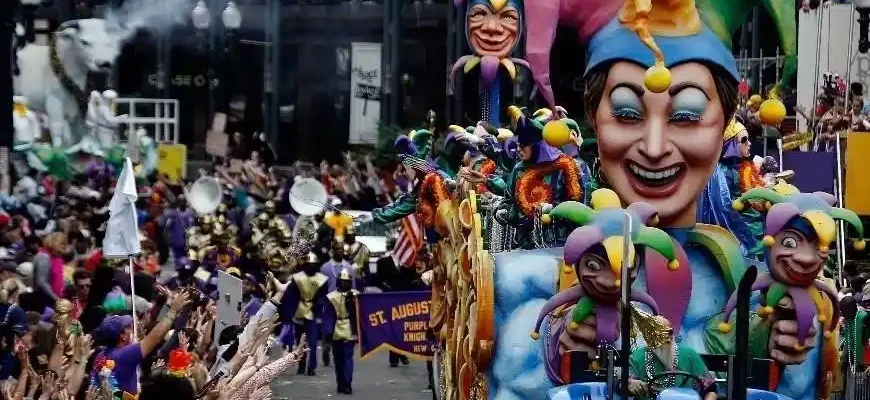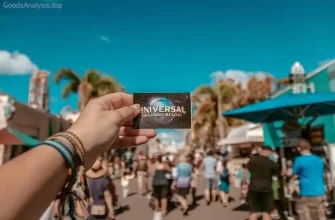Mardi Gras in New Orleans is not just a festival; it’s a living, breathing spectacle that draws millions of visitors from around the world each year. Known for its vibrant parades, dazzling costumes, lively music, and unique traditions, Mardi Gras is a one-of-a-kind experience that reflects the soul of New Orleans. Whether you’re planning your first visit or returning for another round of festivities, here’s everything you need to know about this legendary celebration.
1. What Makes Mardi Gras in New Orleans Special?
Mardi Gras, meaning “Fat Tuesday” in French, is the culmination of weeks of festivities leading up to Lent in the Christian calendar. However, in New Orleans, Mardi Gras is so much more than just a religious observance. It’s a jubilant, city-wide celebration that blends French, African, Spanish, and Creole cultures in a way that’s unique to this Southern city.
- Parades and Krewes: The centerpiece of Mardi Gras in New Orleans are the parades, which are organized by “krewes” (social organizations). Each krewe has its own theme, float designs, and traditions, creating a spectacle unlike any other. The most famous krewes include Rex, Zulu, and Bacchus, all of which parade down the streets with larger-than-life floats, music, and lots of throws (beads, cups, coins, and trinkets).
- Costumes and Masks: The tradition of wearing costumes and masks is rooted in the city’s history of masked balls and secret societies. During Mardi Gras, you’ll see everything from elaborate, colorful feathered creations to quirky, humorous outfits. The masks are worn to allow revelers to break free from social conventions and express their true selves.
- Music and Dance: New Orleans’ musical roots are deeply intertwined with Mardi Gras celebrations. The sound of brass bands, jazz musicians, and marching bands fills the streets during the parades. The second-line parade, where people follow a brass band through the streets dancing and waving colorful handkerchiefs, is a must-see experience.
2. Visitor Tips & Practical Information
- Best Time to Visit: Mardi Gras celebrations officially begin on Twelfth Night (January 6), but the biggest and most popular parades typically occur in the two weeks leading up to Fat Tuesday. The final weekend (the days before Fat Tuesday) is the most crowded and intense, so plan accordingly if you’re looking for a more relaxed experience. For a quieter yet still vibrant atmosphere, consider visiting earlier in the season.
- Opening Hours and Parade Times: Mardi Gras parades happen all day, but the most famous ones are in the late afternoon and evening. Some parades, like the Krewe of Bacchus and Krewe of Endymion, roll after dark and feature spectacular light displays.
- Ticket Prices: Watching the parades is free, but tickets for special events such as balls or seated viewing areas on St. Charles Avenue can range from $25 to $100+ per person, depending on the event.
- Accessibility: New Orleans is a pedestrian-friendly city, but during Mardi Gras, streets can become very crowded. Some areas along parade routes may be difficult to access due to barricades. Be sure to check if your accommodation is accessible and close to parade routes to minimize walking distances.
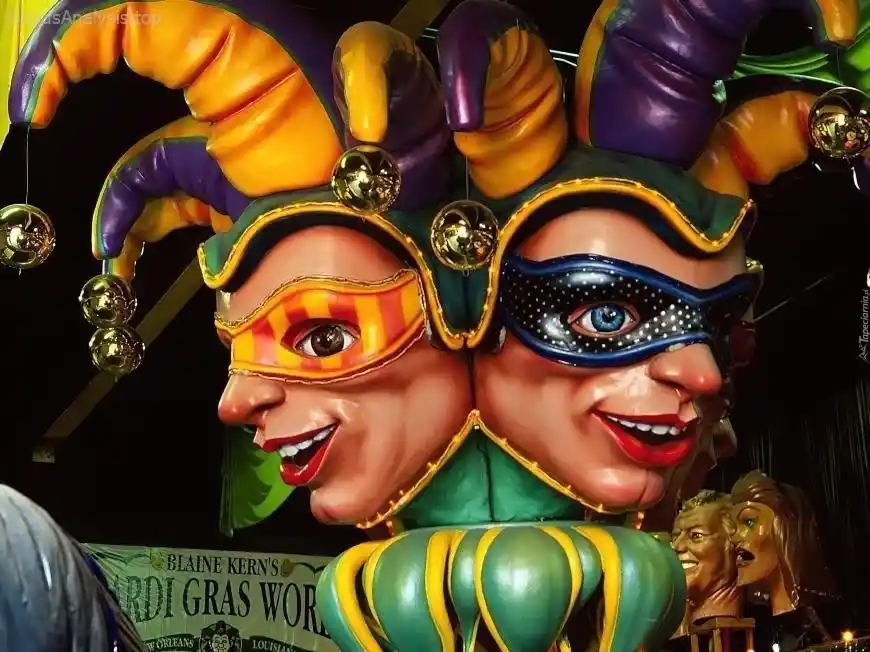
3. History and Cultural Significance
Mardi Gras in New Orleans dates back to 1857 when the first organized parade was held. However, the roots of the festival stretch back further to French colonial traditions, where settlers celebrated the last feast before the Lenten season. Over time, Mardi Gras evolved into a blend of African, Caribbean, and European influences, giving birth to a festival that’s full of creativity, music, and joyous excess.
The krewes (mentioned earlier) are integral to the festivities, some of which date back to the 19th century. The Rex, for example, was founded in 1872 and is still one of the most prominent parades today. The Zulu Social Aid & Pleasure Club, founded in 1909, is famous for its distinctive blackface makeup and coconut throws.
At its core, Mardi Gras is about celebration and freedom, a break from the everyday. It’s about expressing oneself, embracing community, and creating shared moments of joy—values that have remained steadfast throughout its long history.
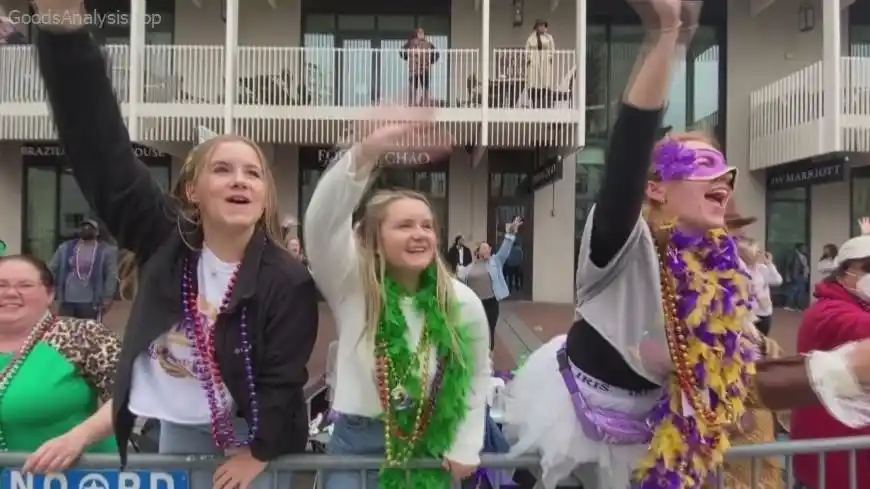
4. What to Expect When You Visit Mardi Gras
- Atmosphere: Expect an explosion of color, noise, and energy. Streets are lined with people wearing masks, costumes, and festive attire. The air is filled with the sounds of jazz, brass bands, and cheers. Everyone is out to have a good time, making New Orleans feel like one giant party. You’ll find people dancing, drinking, and generally celebrating life at every turn.
- Notable Experiences:
- Parades: Parades are the heart and soul of Mardi Gras. Float riders toss beads, coins, and other trinkets to the crowds, so be ready to catch as much as you can!
- King Cake: This is a must-try treat. King Cake is a cinnamon-filled pastry covered in colorful sugar—purple, green, and gold—which are the official colors of Mardi Gras. The tradition involves hiding a small plastic baby inside the cake, and whoever finds it is expected to buy the next King Cake.
- Bourbon Street: Known for its vibrant nightlife, Bourbon Street is where you’ll find endless bars, street performers, and revelers celebrating around the clock. It can get rowdy, especially on Fat Tuesday, so it’s not for everyone, but it’s certainly an iconic part of the Mardi Gras experience.
- Instagrammable Moments:
- The floats themselves are a prime spot for photos. Some are intricate and massive, others quirky and humorous—perfect for snapping pictures.
- The “throws” (beads, coins, etc.) flying through the air during a parade is a quintessential Mardi Gras moment.
- The second-line parade with its dancing and colorful crowds is a lively scene perfect for social media.
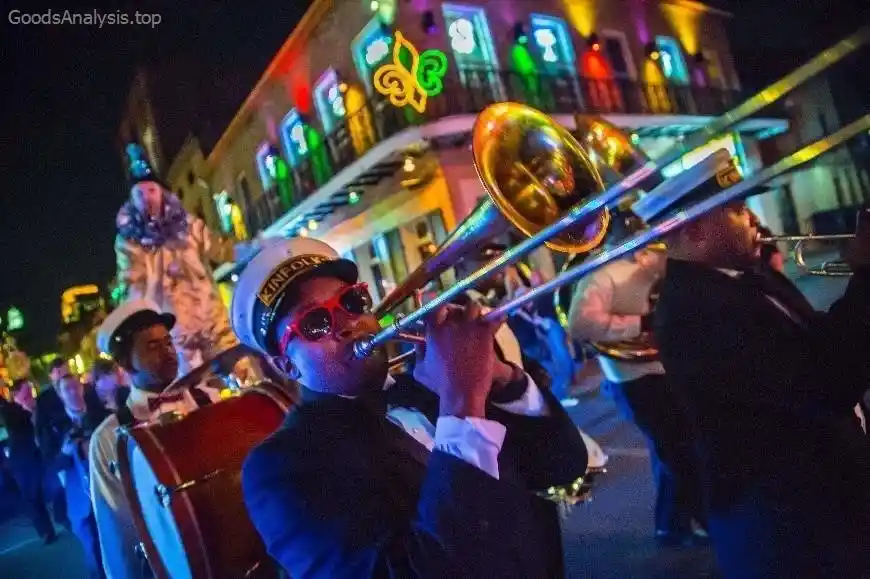
5. Nearby Attractions and Dining Options
When you’re not out on the streets during Mardi Gras, take time to explore the rich cultural and historical offerings in New Orleans.
- French Quarter: The oldest neighborhood in the city, the French Quarter is full of cobblestone streets, historic buildings, and lively bars. Visit Café du Monde for a famous beignet and café au lait.
- Garden District: Known for its stunning 19th-century mansions and oak-lined streets, the Garden District offers a more serene and picturesque experience.
- National WWII Museum: For history buffs, this is one of the most impressive museums in the country. It offers a deep dive into the history of World War II and is located in downtown New Orleans.
- Dining:
- Commander’s Palace: This upscale Creole restaurant is an institution in New Orleans. Known for its incredible shrimp and grits, and its classic Southern hospitality.
- Dooky Chase’s Restaurant: Serving up Creole cuisine, this spot is a local favorite and was a central hub of the Civil Rights Movement.
- Coop’s Place: For more casual fare, this dive bar and restaurant on Decatur Street serves up delicious fried chicken and jambalaya.
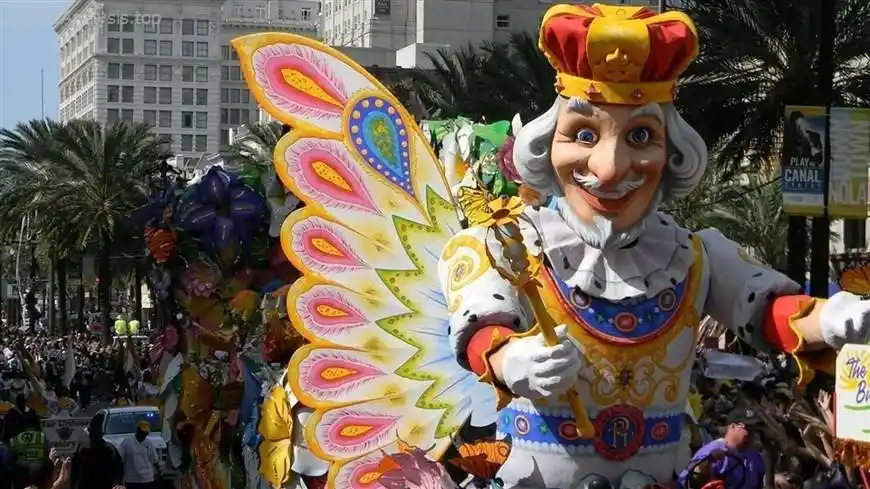
6. Family-Friendly and Group Travel Tips
Mardi Gras is fun for all ages, but it’s important to plan accordingly, especially if you’re traveling with kids or a large group.
- For Families:
- Look for parades that cater to families, such as the Krewe of Iris (the largest all-female krewe) or the Krewe of Orpheus. These parades often feature more family-friendly themes and are less intense than the late-night parades.
- If you’re traveling with children, make sure to claim a good spot early along parade routes for a safe, comfortable experience. Bring plenty of snacks and water, as the festivities can go on for hours.
- For Groups:
- Consider booking a private viewing area or joining a guided tour. There are options to rent a space along the parade route where you can relax and enjoy the event in a more controlled environment.
- Group dining is also easier with reservations. Many popular restaurants will book up weeks in advance, so don’t wait until the last minute.
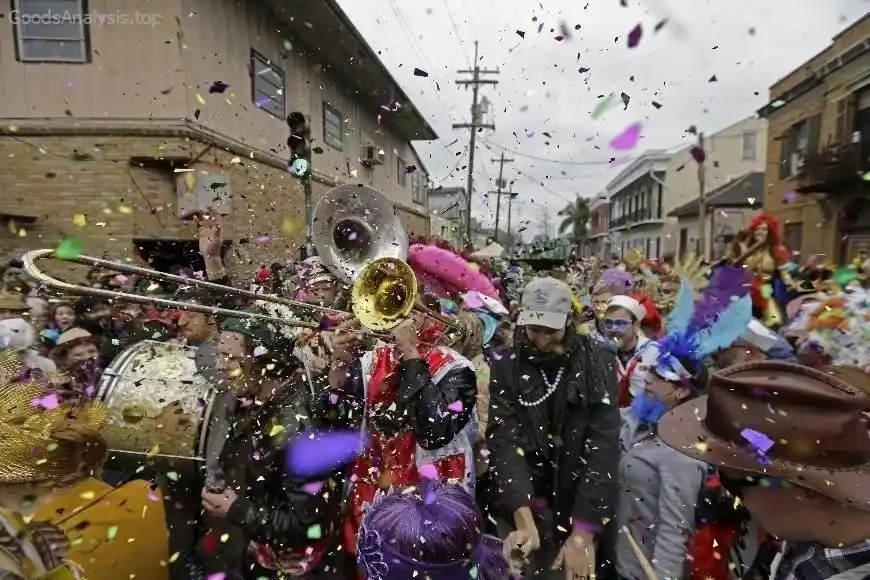
7. Instagrammable Moments and Photo Opportunities
- Mardi Gras Parades: Whether it’s a close-up shot of a float or a wide shot capturing the scale of the crowd, the parades provide endless opportunities for stunning photos.
- Street Performers: Throughout the city, you’ll encounter street performers and musicians playing jazz, blues, and brass—perfect for spontaneous photo ops.
- King Cake: Capture your first bite of this beloved treat. The vibrant colors and the sweet pastry make for a mouthwatering photo!
8. Travel Tips and Transportation
- How to Get There: Louis Armstrong New Orleans International Airport (MSY) is the main gateway to the city, with direct flights from all over the country and abroad.
- Transportation:
- Public Transit: New Orleans has a streetcar system that’s an affordable and scenic way to get around the city.
- Walking: The French Quarter and most of the parade routes are best explored on foot. Be prepared for crowded streets during peak times.
- Taxis/Ride-Sharing: Uber and Lyft are readily available, but traffic during Mardi Gras can be heavy, so be prepared for delays.

